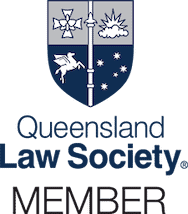Case note: Veyt v Stevenson & Anor [2015] QDC 84
In rear-end collisions in Australia, the following car is generally found to be at fault. However, that is not always the case and in some accidents, the lead driver may be at fault or apportioned a considerable percentage of responsibility for an accident.
Facts
The Plaintiff, Mr Gilbert Veyt (Veyt), a 51 year old motorcycle rider, was attempting to overtake a truck, driven by the Defendant, Mr Lyle Stevenson (Stevenson).
Attempting to pass Stevenson’s truck, Veyt moved his motorcycle into an overtaking lane. Ahead of the truck, was a bicycle. All vehicles were travelling in a southerly direction on Stapylton-Jacobs Well Road, Queensland.
At the same time as Veyt was attempting to overtake Stevenson’s truck, Stevenson moved into the northbound lane, to provide a safe distance between his vehicle and the bicycle.
Veyt, unaware of why Stevenson’s truck had moved into the overtaking lane, attempted to abort his passing manoeuvre. However, he lost control of his motorcycle and crashed onto the roadway.
Veyt alleged that Stevenson’s truck clipped his arm. However, he gave inconsistent versions of the accident during his property damage claim. An entry in the insurer’s records noted that Veyt said it was his motorcycle that actually clipped the back of the truck.
Issue for determination
Veyt (following car) alleged that Stevenson (leading car) was negligent for the rear-end collision for (among other reasons):
- failing to observe the motorcycle was overtaking the truck.
- failing to indicate his intention to move into the overtaking lane.
- failing to exercise due care and skill in the management and control of the truck.
The insurer for Stevenson, CGU, defended the claim, alleging that Veyt had failed to keep a reasonable distance behind the truck, failed to keep his vehicle under control and failed to have regard for his own safety.
Findings
In a judgment handed down in the Southport District Court on 21 April 2015, the Court made these findings of fact with respect to the rear-end collision:
- The truck driver used his indicators, was acting lawfully, was not speeding and checked his mirror before moving into the overtaking lane. The court also found that he did not leave Veyt insufficient room to overtake and only entered the overtaking lane by a couple of metres.
- Veyt was, for the most part, travelling in the truck’s blind spot and failed to observe the truck’s indicators, probably because he was attempting to pass the truck at 90 km/hr.
- Stevenson’s truck did not come into contact with Veyt.
- Stevenson was only 20 to 30 metres away from Jensen before he activated his indicators.
The Court determined that the actions of both drivers contributed to the accident. The Court said that Stevenson, as an experienced truck driver, should have known that there was a risk that a vehicle travelling behind, could be in his blind spot. Because of this, he should have been more careful in checking his rear view mirrors before moving to the right. Stevenson was also considered negligent for indicating his intention to move into the overtaking lane too late.
Given the findings of fact, the Court found that Veyt was negligent and considered an appropriate distribution of blame would be 25% to Stevenson (Defendant) and 75% to Veyt (Plaintiff).
Need help with a rear-end collision accident?
This article is general information only and is not legal advice. For legal advice regarding an accident involving a rear-end collision call (07) 3067 3025.




